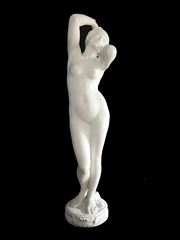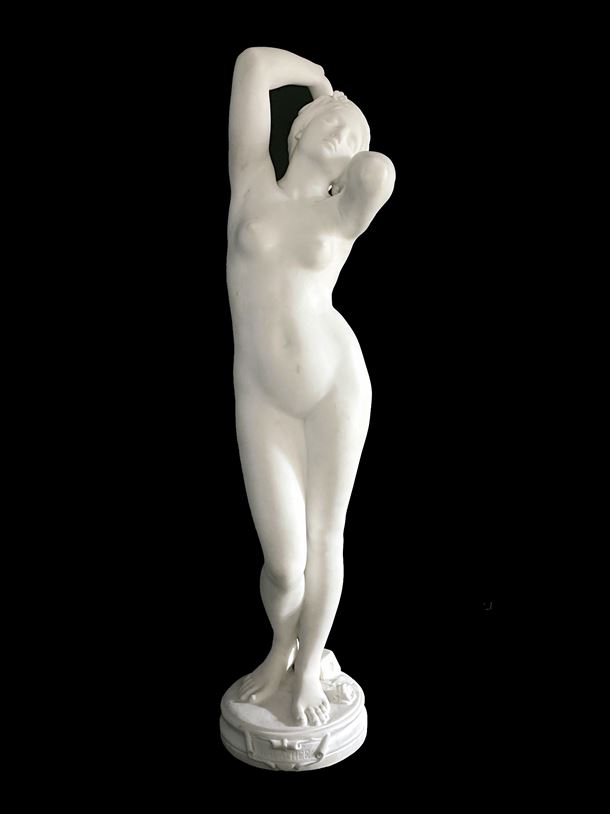back@using System.Web;

Laurent-Honoré Marqueste
(1848 - 1920)
Laurent-Honoré Marqueste was born in Toulouse on 12th June 1848. He studied under the other great nineteenth century sculptor to emanate from that city, Jean-Alexander-Joseph Falguière (1831-1900). Falguière was widely considered to be one of the foremost figures in the growth of Realism in nineteenth century French sculpture, and widely influenced by Classical works. Marqueste was an avid pupil whose interest in realism and classical sculpture mirrored that of his master. Marqueste also studied under Francois Jaffray (1806-1882), a Professor at the Ecole des Beaux-Arts appointed in 1863 and like his pupil a former winner of the coveted Prix de Rome. Marqueste was awarded this accolade in 1871 and made his debut at the Salon in 1874. His first exhibit was “Jacob and the Angel”, a plaster relief which was awarded a third-class medal in 1876, he was awarded a first-class medal for “Perseus Slaying Medusa” and in 1878 at the Universal Exposition a second-class medal. In 1889 Marqueste won a gold medal and at the Universal Expo of 1900 was awarded the Grand Prix. In 1884 he was awarded the Legion d’Honneur and in 1907 promoted Commander.
Marqueste produced large and small scale works in marble, bronze, plaster and terracotta, for both public and private commissions. Public commission included works in the National Library, the New Sorbonne, Palais Bourbon and for the town of La Flêche near Angers. His smaller scale works included classical and mythological subjects, and female nudes, which he exhibited at the Salon to widespread acclaim.
His works can be seen in museums in: Paris, Louvre and Palais des Beaux-Arts and Châteaubriand, Toulouse.
Marqueste produced large and small scale works in marble, bronze, plaster and terracotta, for both public and private commissions. Public commission included works in the National Library, the New Sorbonne, Palais Bourbon and for the town of La Flêche near Angers. His smaller scale works included classical and mythological subjects, and female nudes, which he exhibited at the Salon to widespread acclaim.
His works can be seen in museums in: Paris, Louvre and Palais des Beaux-Arts and Châteaubriand, Toulouse.

